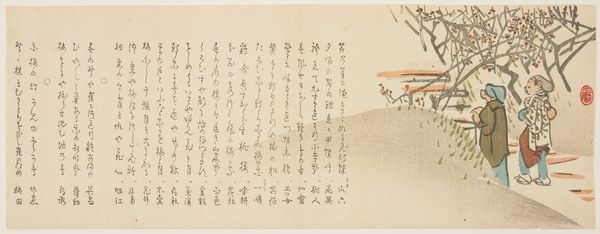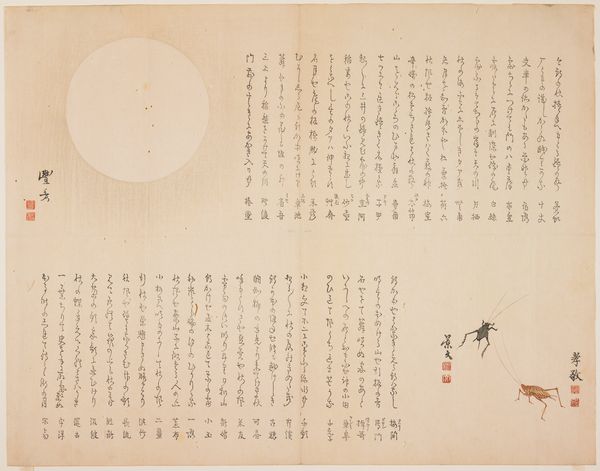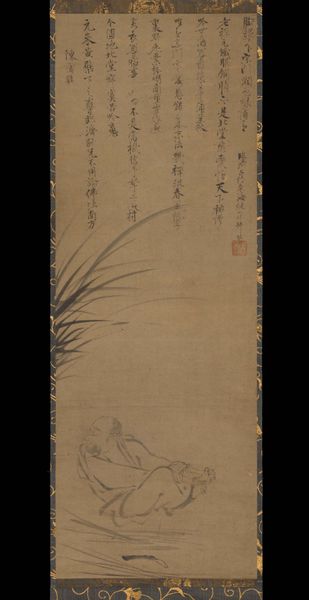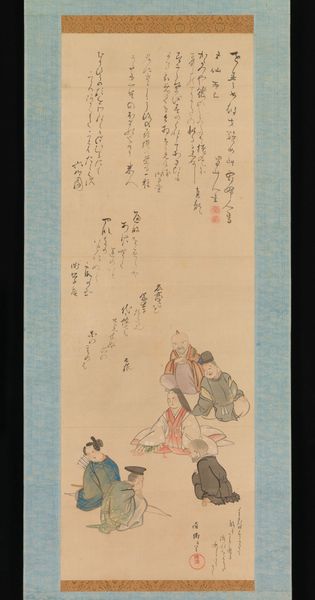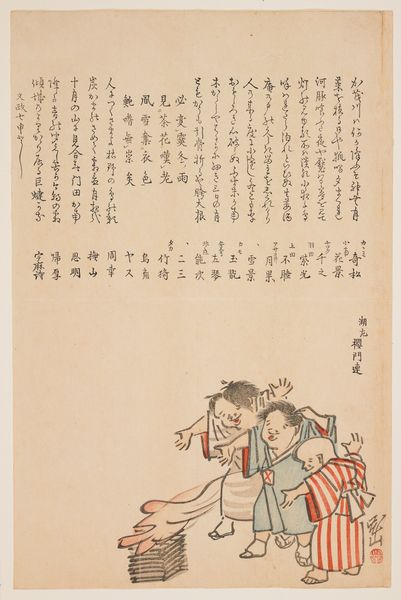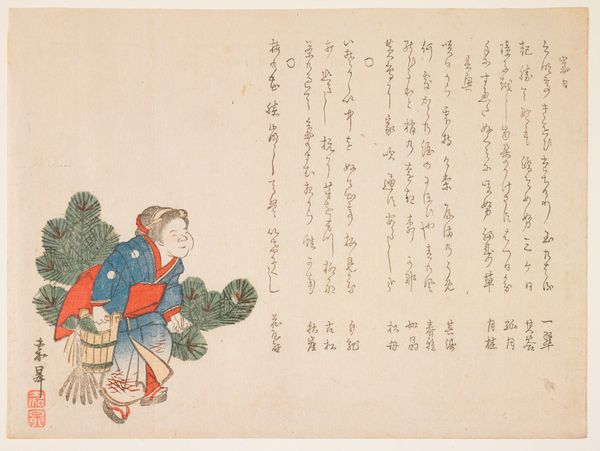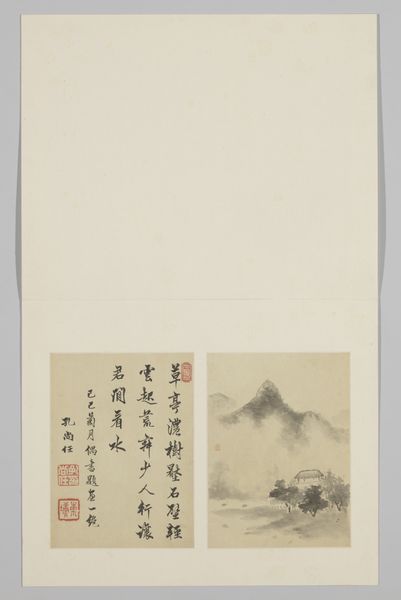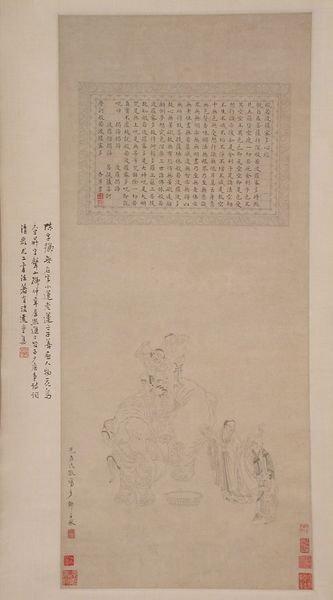
print, ink, woodblock-print
#
water colours
# print
#
asian-art
#
landscape
#
ukiyo-e
#
japan
#
ink
#
woodblock-print
Dimensions: 15 1/4 x 9 5/8 in. (38.7 x 24.4 cm) (image, sheet)
Copyright: Public Domain
Curator: Up next we have a piece created by Okamoto Toyohiko in 1826. This ink and watercolor woodblock print, known as Snowy Landscape, comes to us from the Minneapolis Institute of Art. It’s Ukiyo-e, placing it squarely within that fascinating tradition of Japanese art from the Edo period. What captures you first about it? Editor: It feels… lonely. Utterly peaceful, yes, but that little structure nestled among the trees looks so isolated, like a haven perhaps, but also a place of complete solitude. Is that the artist reflecting something about his own life perhaps? The choice to depict the stark, unforgiving winter scene is striking. Curator: Well, winter in Japanese art can be symbolic on so many levels, from resilience and endurance to purity and acceptance of the natural cycle. Beyond just nature’s beauty, Ukiyo-e often plays with symbolism in subtle, evocative ways. That cottage could be a symbol of home, family, or perhaps a longing for simpler times amidst political complexities. What are your impressions of how these elements are in dialogue? Editor: Visually, it reminds me of how the Japanese respect the practice of Ma – the emptiness is powerful in activating imagination. The snow isn't just snow; it feels like a visual representation of silence, a kind of profound quietude. Those few brushstrokes that define the trees manage to capture weight and texture. A visual haiku, of sorts. What of the script on this? It's almost another picture. Curator: Exactly! It functions as part of the total pictorial, and of course speaks directly, connecting viewers to something that exists beyond mere landscape. What about the work's lasting impact? How do you read it? Editor: It’s a cultural anchor reminding me of how transient and persistent our bonds to place can be, offering us both emotional refuge and, let’s say, an intellectual exercise of contextual understanding of symbolic worlds through its composition and subtle details. Winter as acceptance; very Zen, very Japanese, indeed. Curator: Ultimately, it embodies the emotional depth that a landscape—even a seemingly simple one—can contain. In exploring this work, perhaps we are able to uncover parts of ourselves we rarely acknowledge.
Comments
No comments
Be the first to comment and join the conversation on the ultimate creative platform.
